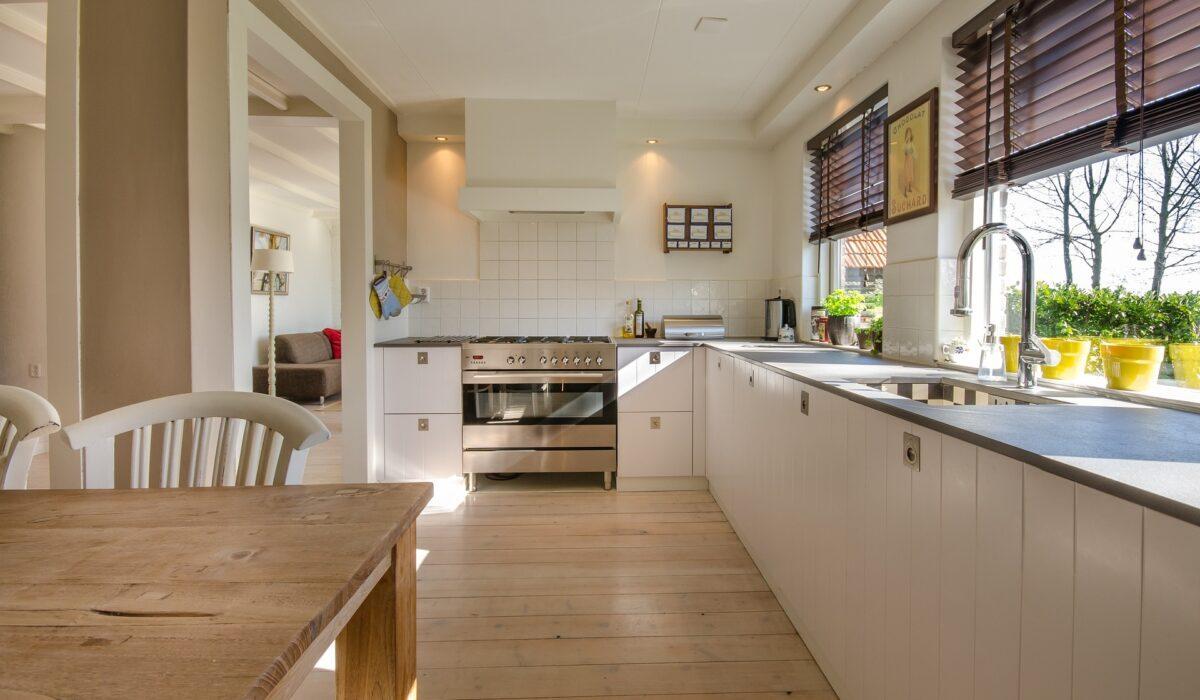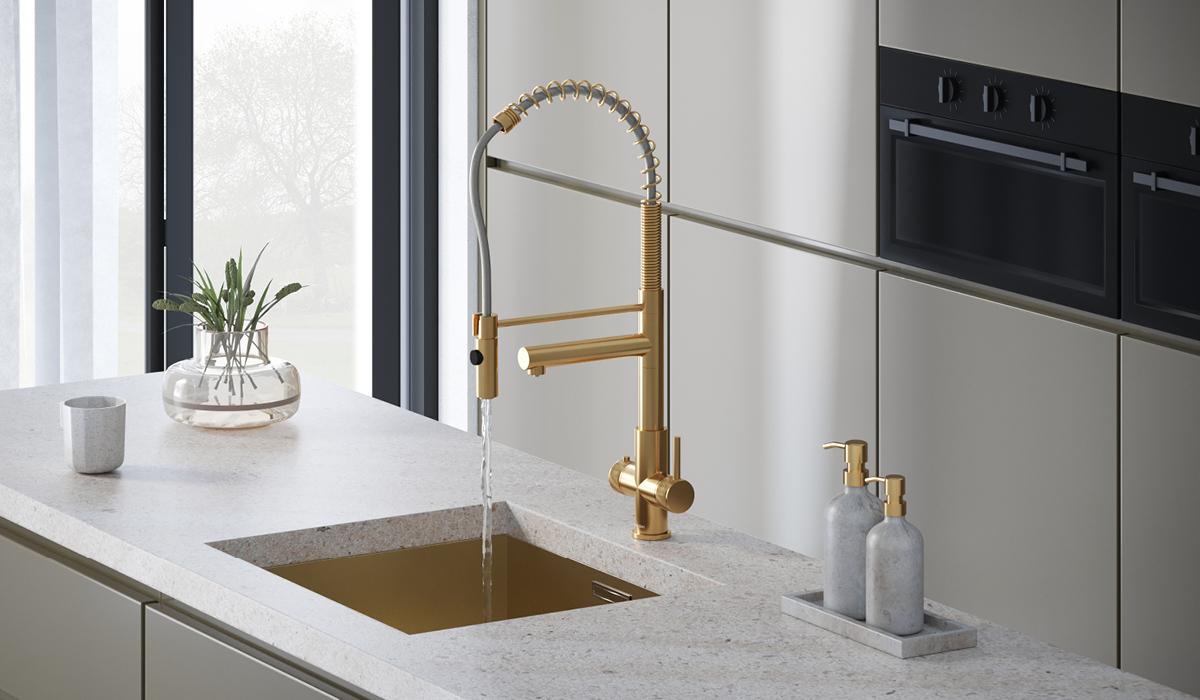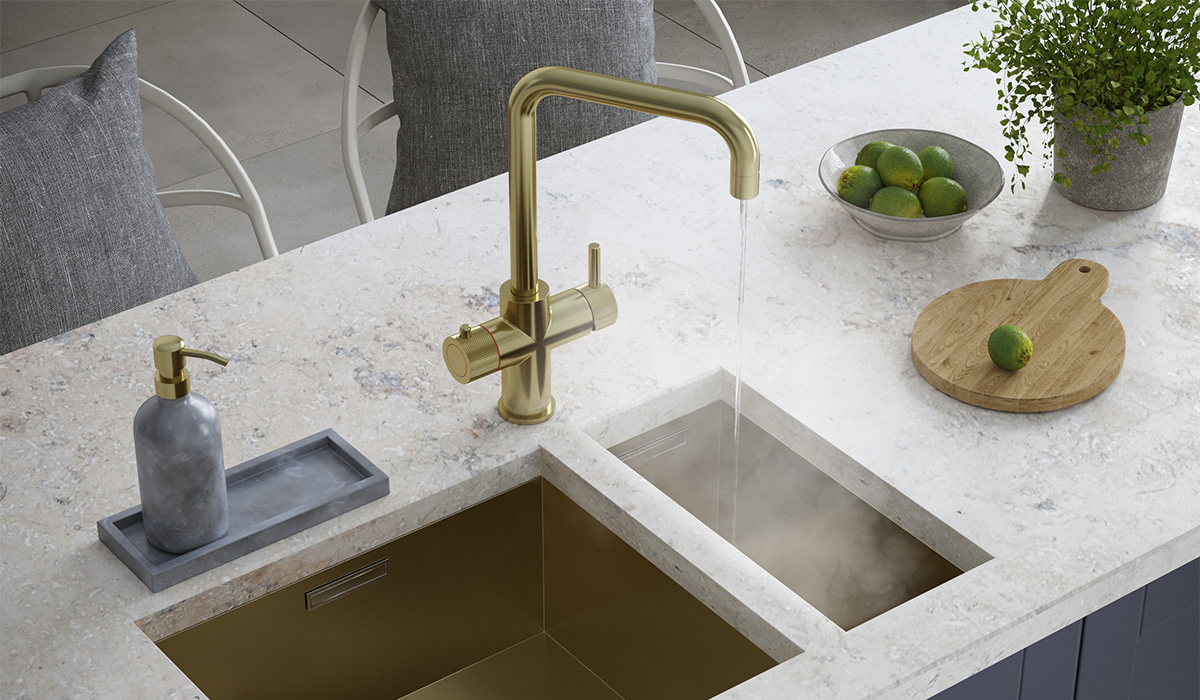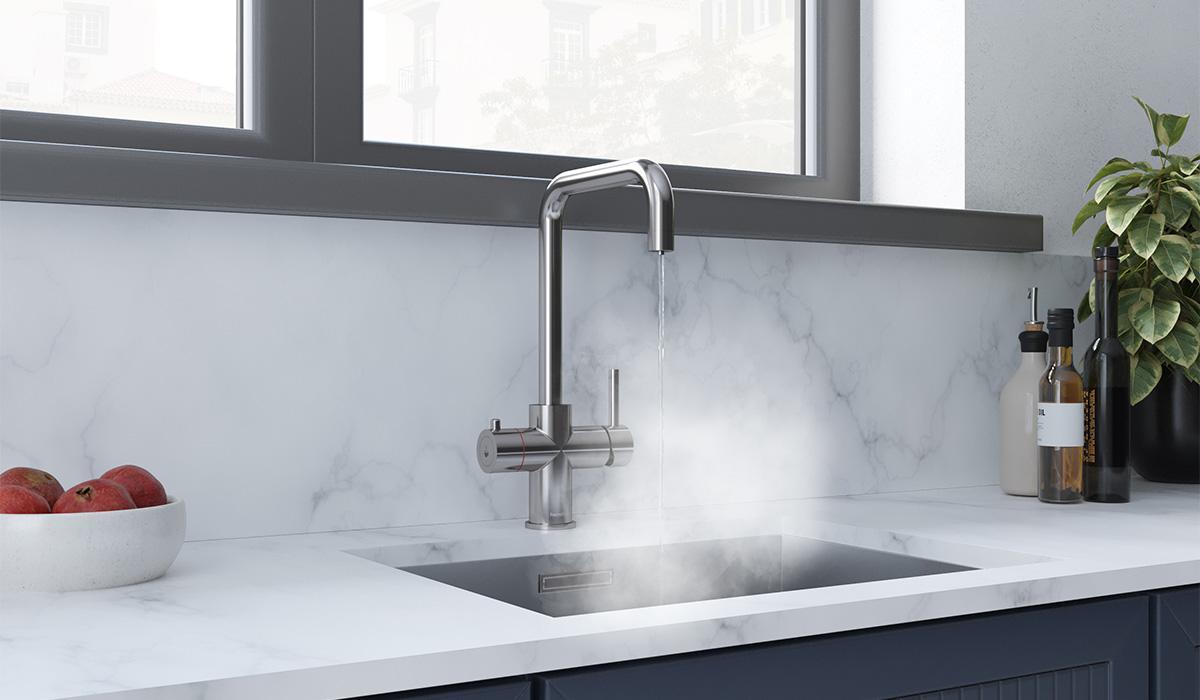Are you looking to make your kitchen more eco-friendly? There are plenty of things you can do to make your kitchen more sustainable and reduce your environmental impact. In this blog post, we will discuss nine steps you can take to make your kitchen more eco-friendly. Read on to learn more!
Why should we have an eco-friendly kitchen?
One important reason why we should strive to create an eco-friendly kitchen is that it can help to reduce our impact on the environment. This is because this type of kitchen is more conscious of resource conservation, utilising low-energy appliances, repurposing materials whenever possible, and minimising food waste. For example, an eco-friendly kitchen might use energy-efficient bulbs or opt for smaller and greener appliances like induction cooktops or slow-cooker crocks.
By incorporating these simple strategies into our daily routine, we can help to conserve resources and minimise our impact on the planet. Additionally, an eco-friendly kitchen can also have many tangible health benefits for us as well. Switching out harmful cleaning products for natural ones, for instance, can have a huge impact on reducing the number of toxins in our lives and promoting a healthy indoor environment.
Altogether, then, there are many reasons why we should strive to create a more eco-friendly kitchen in our homes. Whether we are concerned with conserving resources or living a healthier lifestyle, this type of kitchen has something to offer all of us.
9 Steps to an Eco-Friendly Kitchen
1. Use eco-friendly paint
Whether you are redesigning an entire kitchen or choosing paint for a single wall, it is important to choose eco-friendly paints. Not only can some conventional paints have negative impacts on the environment, but they can also be harmful to the health of humans and animals. By opting for eco-friendly paint instead, you can ensure that your kitchen is both beautiful and safe.
Eco-friendly paints are typically made from natural, non-toxic ingredients that are free from heavy metals and volatile organic compounds. This makes them ideal for use in kitchens, where there is a high risk of exposure to food and cooking fumes. Additionally, rather than polluting the air with harmful chemicals, these paints actually help to purify it by eliminating common pollutants like formaldehyde and benzene.
So if you want a kitchen that looks great, is easy on the planet, and won’t compromise your health, opt for eco-friendly paint. Whether you tackle your kitchen design project yourself or hire a professional contractor, it is sure to look amazing and keep your family safe and healthy!
2. Decorate with antique and vintage accessories
Decorating one’s kitchen can be a fun and rewarding process, whether you’re looking to create a warm and inviting space for friends and family to gather or simply seeking to add a bit of unique flair to your home. One great way to add interest and personality to your kitchen is by incorporating antique or vintage accessories into its decor. Not only do these types of accessories evoke feelings of nostalgia and provide a visual touchstone for each room, but their unique designs often set them apart from modern options.
Whether it’s an antique coffee grinder, a vintage table clock, or any other kind of aged accessory, the right piece can help transform your kitchen into an elegant and eye-catching space that you’ll love spending time in. So if you’re looking to take your kitchen decor to the next level without impacting on the environment, consider adding some antique or vintage accents to the mix.
3. Champion natural materials
As people become more conscious of the environmental impact of their choices, they are looking for ways to reduce their carbon footprint. One area where this is especially evident is in the kitchen. More and more homeowners are choosing eco-friendly kitchen appliances and materials to be more sustainable. One popular trend is to champion natural materials. Here are just a few reasons why natural materials are a great choice for an eco-friendly kitchen.
First, natural materials are often more durable than synthetic materials. This means that they will last longer and won’t need to be replaced as often, which reduces waste.
Second, natural materials are often renewable. This means that they can be replenished without causing harm to the environment.
Finally, natural materials often have a lower carbon footprint than synthetic materials. This means that they require less energy and resources to produce, which reduces greenhouse gas emissions.
So, if you’re looking to create an eco-friendly kitchen, consider using natural materials wherever possible. You’ll be doing your part to help protect the environment while also creating a beautiful and durable space.
4. Install second-hand cabinets or flooring
Updating your kitchen doesn’t have to cost a fortune – or require any new construction. If you’re wanting to give your kitchen a facelift, one of the best places to start is with the cabinets and flooring. If your cabinets are in good shape but could use a fresh coat of paint or new hardware, that’s an easy and inexpensive update. And if you’re wanting to replace your cabinets entirely, consider buying used cabinets.
You can find some amazing deals on beautiful cabinets that someone else has already paid for, which cuts down on manufacturing and transportation emissions. As for flooring, bamboo is a great eco-friendly option that’s durable and stylish. Cork is another good choice – it’s softer underfoot than hardwood, so it’s more comfortable to stand on for long periods. And once it’s installed, cork helps to insulate your home and reduce the noise level. So if you’re thinking about updating your kitchen, consider these eco-friendly options for cabinets and flooring.
5. Use compost bins to limit food waste
When it comes to minimising food waste, there are many different strategies you can use. One of the most effective tools is composting, which allows us to transform our excess food into nutrient-rich soil. Compost bins are a great way to organize and facilitate this process, making it simple and easy to turn food scraps and other organic waste into useful fertiliser. At the same time, composting also helps to limit our impact on the environment by reducing the amount of harmful methane gas that gets produced when food scraps are left in landfills.
So if you’re looking for a simple way to reduce your contribution to food waste and help protect our planet, consider investing in a compost bin today. Not only will you be doing your part for the environment, but you’ll also be able to reap all of the benefits that come from using fresh and sustainable compost in your garden.
6. Freeze leftover dishes, sauces and veggies
There are many reasons why we might want to freeze our leftover dishes, sauces, and vegetables. First and foremost, freezing allows us to store these foods for later use. Whether we need ingredients for a meal that is being prepared at a later date, or we simply want to save leftovers from an earlier meal, freezing is a convenient way to keep these foods on hand.
In addition, freezing can actually help preserve the integrity of foods and keep them fresh. For example, by flash-freezing vegetables soon after harvesting them, we can prevent them from losing their nutrients and their fresh taste over time.
Finally, freezing is also a great option if we are looking to simplify our cooking process or save money on groceries. By stocking up on frozen ingredients and leftovers in advance, we can reduce the amount of time spent in the kitchen or avoid purchasing things that will go to waste otherwise. In short, there are many good reasons why we might choose to freeze our leftover dishes, sauces, and veggies. Whether for convenience, preservation, or saving money, freezing is an amazingly useful and underappreciated technique.
7. Revive old tiles instead of replacing them
When it comes to designing an eco-friendly kitchen, there are many different factors to consider. For example, you might consider replacing your old appliances with more energy-efficient models or using low-VOC paint and other materials that won’t emit harmful chemicals into your home. Additionally, you might opt for alternatives to disposable paper products, such as cloth napkins and washable utensils. However, one important factor often gets overlooked when it comes to going green in the kitchen: reviving old tiles instead of simply replacing them.
There are a number of reasons why reviving old tiles is a great choice for those seeking an eco-friendly kitchen upgrade. For one thing, this approach helps to reduce waste by avoiding the need for new materials entirely. Materials such as concrete or subway tile can be long-lasting and easy to clean, meaning that they can be reused indefinitely rather than being tossed out once they start looking worn down or outdated. In addition, reviving old tiles doesn’t require any toxic chemicals or other harsh materials; in fact, some restoration methods even use recycled glass or natural dyes for their colour options. Overall, reviving old tiles is a great way to create a sustainable and eco-friendly kitchen space that will help protect our planet for years to come.
8. Choose eco-friendly kitchen appliances
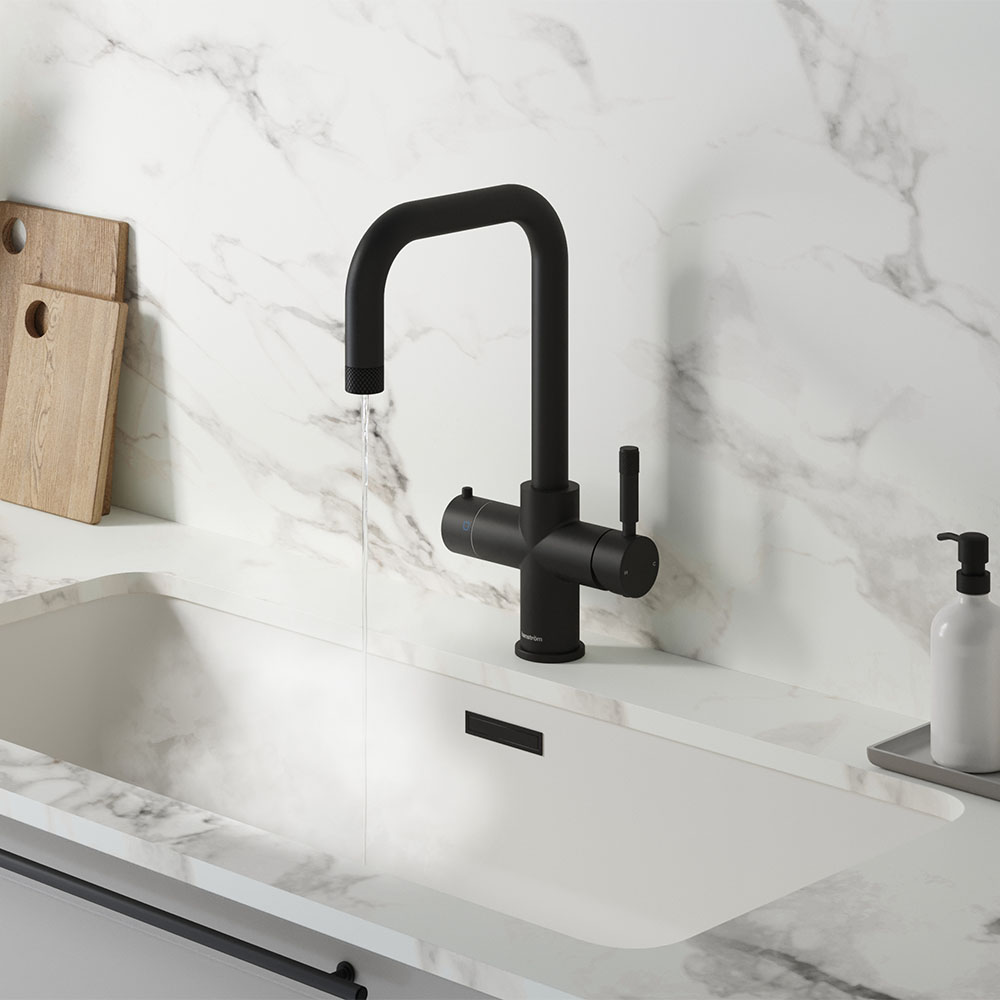
The first eco-friendly kitchen appliance you can buy is an induction cooktop. Induction cooktops use less energy than gas or electric cooktops, and they are also safer as there is no open flame. If you are looking for an eco-friendly fridge, consider a model that uses LED lighting. LED lights use less energy than traditional fluorescent bulbs and last longer, so you won’t need to replace them as often.
Another eco-friendly option for your kitchen is boiling taps. Boiling taps are installed underneath your kitchen sink and provide near-boiling water on demand, eliminating the need for a kettle. Not only do boiling taps save energy, but they also save time as you won’t need to wait for the kettle to boil. In addition, boiling taps are more hygienic than kettles as they don’t require you to pour water into a dirty vessel. When choosing a boiling tap, look for one with an adjustable temperature setting so that you can boil water when you need it without wasting energy.
You can also find eco-friendly dishwashers that use less water and energy than older models. When shopping for new kitchen appliances, look for models that are Energy Star certified to be sure you are getting the most efficient option.
9. Pick eco-friendly LEDs
When it comes to lighting up your kitchen, there are many factors to consider. Not only do you need to choose the right type of light (such as fluorescent bulbs or LEDs), but you also have to consider the overall energy efficiency of the bulbs and how they will impact the environment. Of all the different options available, eco-friendly LEDs are one of the best choices for several reasons.
Compared to other types of lighting, LEDs offer superior energy efficiency and lower costs over time. With traditional fluorescent bulbs, for example, most of the energy consumed is converted directly into heat, as opposed to light. This wastes energy and results in higher electricity bills. In contrast, LEDs generate minimal heat and use less power than fluorescents, thus minimising their overall environmental footprint.
Beyond their superior energy efficiency, eco-friendly LEDs are also more versatile than traditional lighting options. They can be used not just in kitchens but also in bathrooms and other parts of a home where moisture is present. And unlike incandescent bulbs that burn out quickly and require frequent replacement, these long-lasting lights can last for years with proper care and maintenance. So if you are looking for a safe and sustainable way to illuminate your kitchen, look no further than eco-friendly LEDs.
Eco-friendly FAQs
What is the most sustainable wood for cabinets?
When it comes to sustainable cabinetry, there are a few different factors to consider. One is the origin of the wood. Hardwoods like maple and oak are often sourced from North America, while tropical hardwoods like mahogany and teak are typically imported from South America or Southeast Asia. In Europe, the most common species of trees harvested for wood are beech, birch, ash, and maple. Here in the UK, oak is incredibly common and makes a sturdy material for kitchen cabinets. Lower air miles, therefore, make oak a sustainable choice if you’re designing an eco-friendly kitchen.
Another consideration is the way the wood is harvested. Some methods, such as clear-cutting, can do significant damage to forests. On the other hand, sustainable harvest methods like selective logging help to ensure that forests remain healthy and productive. To ensure your wooden cabinets have been sourced sustainably, look for products that are certified by the Forest Stewardship Council (FSC).
Are granite worktops eco-friendly?
When it comes to kitchen worktops, granite is one of the most popular materials on the market. Granite is incredibly durable and resists scratches and stains, making it a great choice for busy families. However, some people are concerned about the environmental impact of granite worktops. Granite is a natural stone that is mined from the earth, and the process of extracting it can be damaging to the environment.
In addition, transporting granite long distances can also lead to carbon emissions. However, it is important to remember that granite is also one of the most sustainable materials available. Granite worktops can last for decades with proper care, and they can be recycled at the end of their lifespan.
Are gas hobs more eco-friendly than electric hobs?
In recent years, many homeowners have become more conscious of their impact on the environment. As a result, eco-friendly appliances have become increasingly popular. When it comes to cooking, gas hobs are often seen as the more eco-friendly option.
Gas is a renewable resource, and it is relatively efficient to use. In addition, gas hobs generate less heat than electric hobs, making them more energy-efficient. However, electric hobs have also become more energy-efficient in recent years. And while they do generate more heat than gas hobs, this heat can be used to warm up the kitchen, making it more comfortable during the colder months.
Conclusion
So there you have it! A nine-step guide to creating an eco-friendly kitchen. We hope you found this helpful and that you’re now inspired to take some simple steps towards making your kitchen more sustainable. If you have any questions or want more tips, don’t hesitate to reach out to us – we’re always happy to help.
Did you know a boiling water tap can save energy in the long run? By storing and delivering boiling water in the exact quantity you need, you can avoid the waste produced by kettles. Find out more about how a boiling water tap works.
